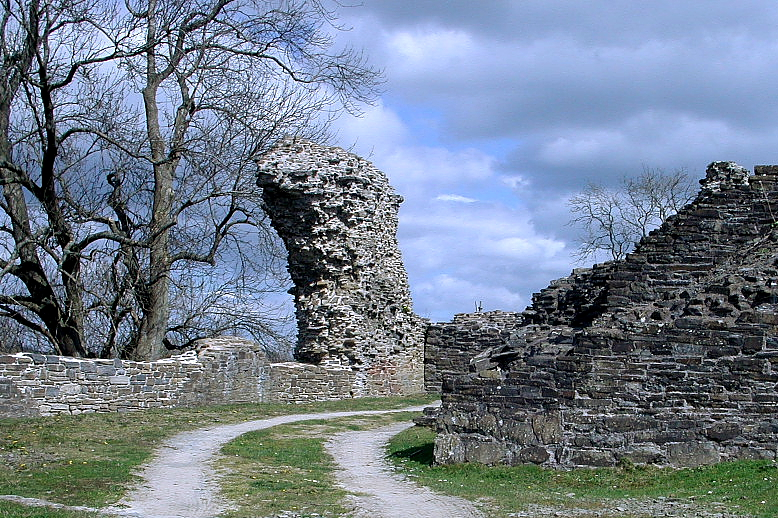
Castle sits at summit of ridge overlooking the Severn
Dolforwyn Castle stands on a wooded hill overlooking the Severn valley, a scene so peaceful today it is hard to imagine it once being the centre of military conquest.
But the Severn valley forms a natural route into Wales and the significance of the river crossing at Rhyd Chwima, near Montgomery, was not lost on the Normans who built an earth and timber castle soon after the Conquest in 1066 at Hen Domen.
Later, the increasing power of Llywelyn ab Iorwerth, prompted the young King Henry III to establish a new castle and town at Montgomery in 1223, a defence against the territorial ambitions of the princes of Gwynedd and Powys.
By 1258, Llywelyn ap Gruffudd, grandson of Llywelyn ab Iorwerth, had increased his influence across Wales, especially around Montgomery, leading to his recognition as Prince of Wales by Henry III at the Treaty of Montgomery in 1267.
After Henry III’s death in 1272, his successor Edward I was initially content to sustain the status quo but relations between the two factions quickly deteriorated.
In 1273, Llywelyn began building Dolforwyn, just six miles from Montgomery, in a bid to secure his gains against future English aggression.
The castle was built along the summit of a natural ridge overlooking the Severn and consisted of a walled rectangular enclosure augmented by a deep dry moat cut out of the rock, with a rectangular keep guarding the entrance. It was paired with an adjacent fortified town.
The initial construction of Dolforwyn led Edward I to write to the prince forbidding him from building the castle but the prince replied that he didn’t require the king's permission to raise a stronghold in his own principality.
But Llywelyn’s occupation of Dolforwyn proved short-lived as it was captured by the English in 1277. After a fortnight's siege, it was taken by Roger Mortimer and given to his family, a powerful Marcher clan.
Llywelyn's fledgling town on the ridge to the west was suppressed under English rule and Mortimer founded Newtown in 1279 on a more suitable site nearby.
Following the defeat of Prince Llywelyn in 1282, the castles of Montgomery and Dolforwyn lost their military significance and were modified by their English owners. By 1398 Dolforwyn was described as ‘ruinous and worth nothing’ and was abandoned and lost from sight, except as the occasional subject for Romantic landscape artists.
But, over the past 30 years, Cadw has worked to safeguard and restore key sites linked with the Welsh princes, opening many to the public and transforming our understanding of them.
Dolforwyn was the focus of a major programme of excavation and conservation between 1981 and 2001 and is now fully open to the public.






